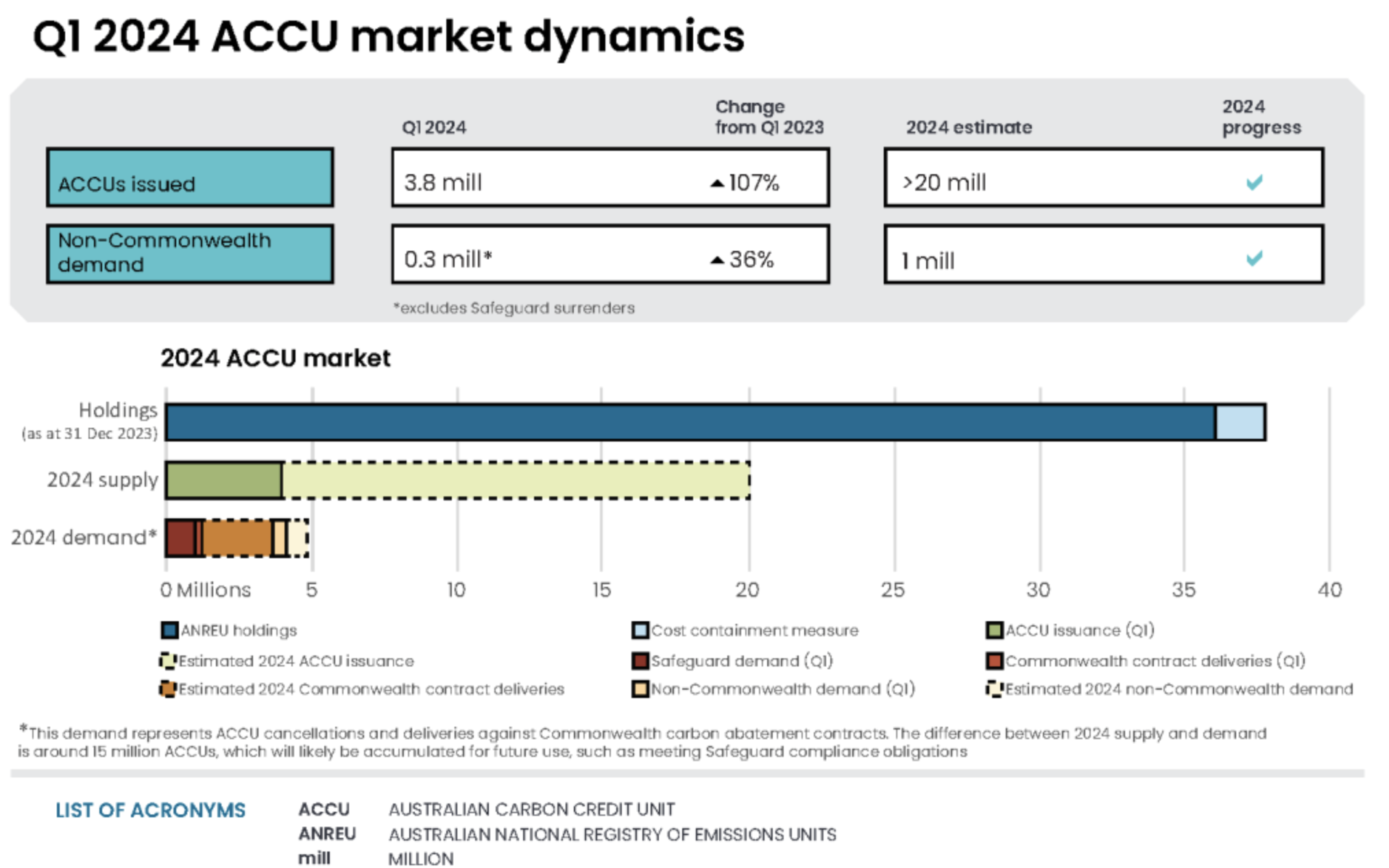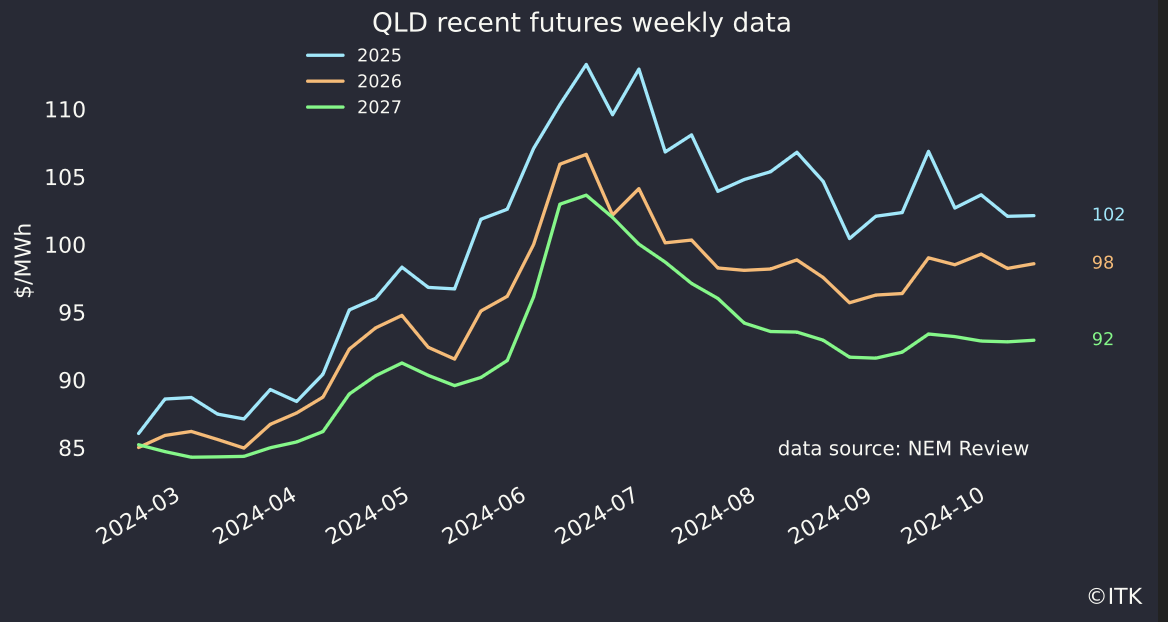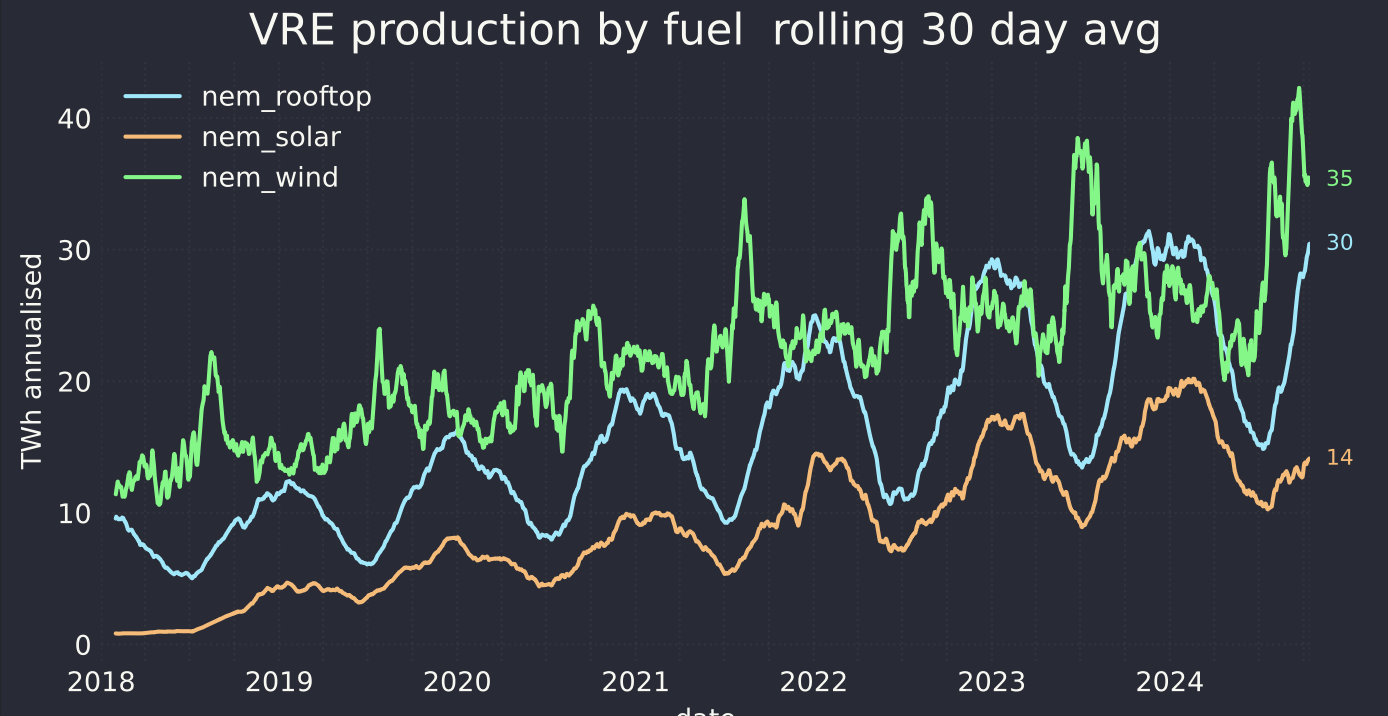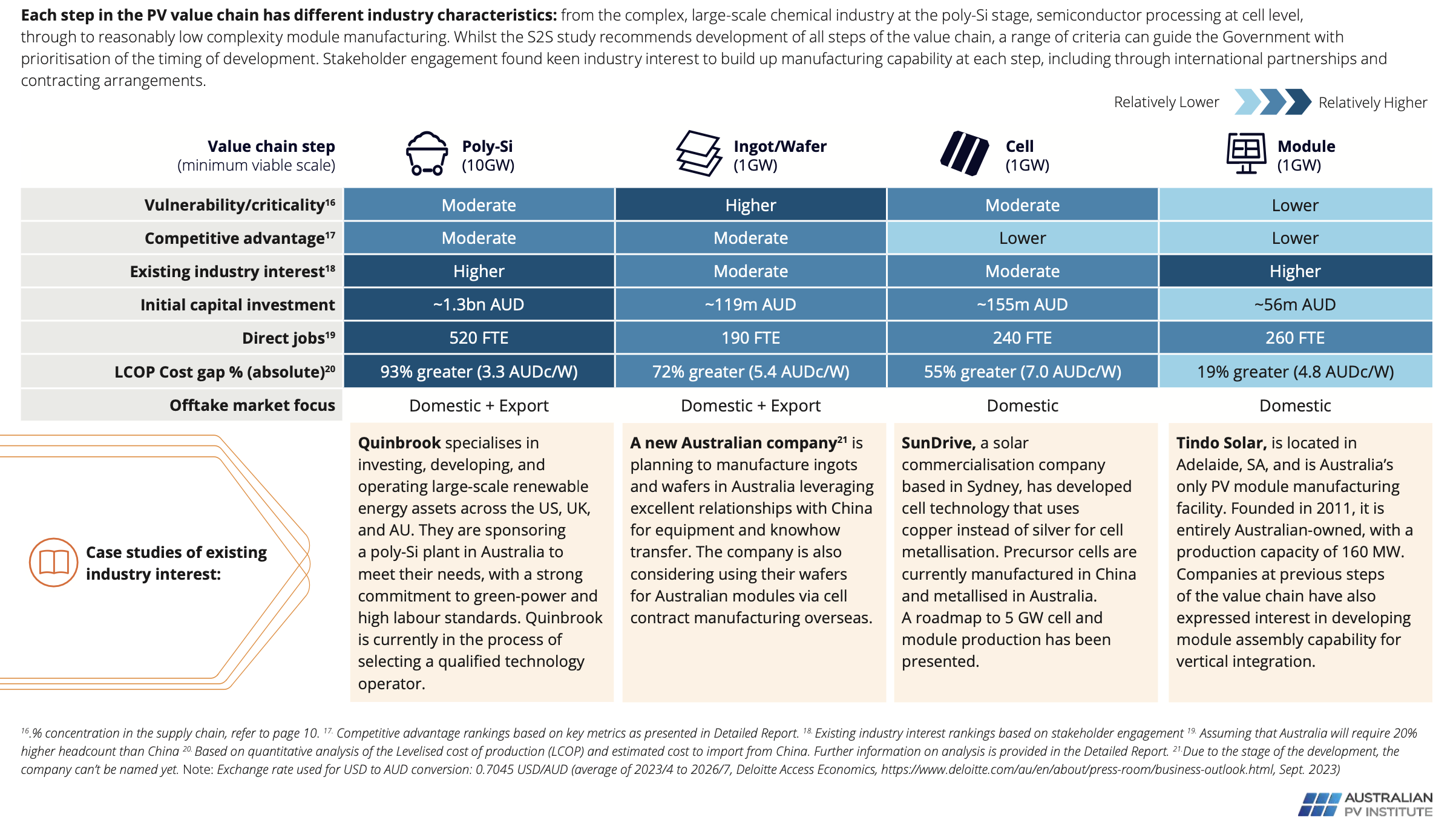The ALP has great energy policy achievements but they can’t sell
The current Federal Goverment might run its energy and climate election message as:
“When we came to office the decade of decay induced by the previous Govt took more serious repair than was obvious from the outside. In the current term we have:
- Restored the Federalism that Angus Taylor attempted to break;
- Put in place vehicle emissions standards following 30 years of neglect;
- Put in place binding carbon emission reduction caps on Australia’s largest 100 emitters and in the process provided a new carbon farming income stream to regional developers.
- Laid the transmission and social license foundations for an electricity system that is efficient, reliable and reduces emissions. The new NEM will rise from those foundations over the next four years. Specifically for social license, electricity price reductions will apply to all residents and businesses in an REZ once a specified target level of generation capacity has been built in the REZ. These price reductions will be funded by taxes on retailers that do not meet a specified share of renewable generation in their sales volumes. Should the retailers reach their targeted shares lower prices will be paid for by an industry wide tax similar to the city v country system in Qld.
- Begun the process of using electricity to decarbonise process heat. Our new program will ensure up to 100 PJ of existing gas can be redeployed from process heat to higher priority uses and at the same time significantly reduce carbon emissions. Of interest to the technical folk, using electricity for process heat will tend to also increase the resilience and flexibility of the grid by making demand more short term responsive to price signals. Of course this will largely eliminate the need for new domestic gas fields in the short term.
- Moved to take advantage of our world leading behind the meter solar program by coupling it with behind the meter batteries. We did this easily by simply extending the SREC scheme to include residential batteries.
- Commenced the process of redesigning the NEM for a largely renewable energy based system by commissioning and independent review lead by xxx to design a NEM that will provide efficient prices, lower carbon emissions and provide more reliability than any other comparable grid in the world.
Although most of that election message is already in place a few bits of policy are still required.
As Joe Bejelke Peterson said: “if the chooks quack feed them”
The Government has excellent policy achievements but in common with the entire Government agenda seems to have no ability to sell them. I rate Chris Bowen’s actual achievements very highly in view of the difficulties faced but I rate his marketing ability less well. He is the solicitor and not the barrister. Still if the Government had the courage of its convictions and enough self belief to go out and aggressively market its achievements it might actually regain some control of the agenda. It makes me sick to hear aggressive media questioning of say the need for more gas power as propounded by Ted O’Brien when we should be talking about the CIS, the Safeguards scheme and the NVES. The Government goes into defence when it needs to be loud and proud. I do not say this as an ALP supporter, I am more of a Teal, but as a defender and proponent of good policy. Policy doesn’t just need to be made, it needs to be seen to be made and the results need to be celebrated loud and often.
Abbot, Turnbull and Morrison the lost decade
During the Abbott, Turnbull and Morrison years there was effectively zero carbon policy. Worse than that, a perfectly good carbon pricing scheme that passed despite the best efforts of the Greens and the LNP was ripped up.
Yet to Abbott’s chagrin renewable energy penetration grew thanks to the LRET and SREC targets. Showing that nature does indeed abhor a vacuum States stepped in to fill the breach. Special mentions during this decade should go to Simon Corbell, Lily D’Ambrosio and then Matt Kean. Three politicians from three different parties each of whom worked for the good of Australia. In a way the very negativity of Angus Taylor as Federal Environment minister seemed to unite the States to stand together.
The Albanese Goverment
The Albanese Govt took office in May 2022. In this note I set out my recollection of the major policy initiatives in regard to climate and energy. I might say that public awareness of the policy or of the energy minister is very low. I regularly ask people, eg at the hair dresser, or a server in a restaurant if they know who the Energy Minister is, and the answer is generally no. So it’s no shame really if one struggles to list the policy achievements even if the totality of them is actually quite significant.
Carbon objective in National Electricity Law
A carbon objective has been included in the National Electricity Law. I’m not a lawyer so I don’t really know the significance of this but I’m listing it first because I am guessing it means carbon emissions need to be accounted for in AEMC, AEMO and AER rules and policies.
Safeguards scheme with teeth but more needed
The “safeguards” scheme has been tightened.
As a reminder the Safeguards scheme applies to facilities that emit more than 100 kt of CO2 per year. About 219 facilities fall under the scheme and in aggregate are responsible for about 30% of total emissions. Total emissions in Australia are around 465 mt, and 30% is about 139 mt. The safeguards scheme requires this to fall to 100 mt by 2029/2030. Each facility, unless it is trade-exposed is required to show a 4.9% decline per year to 2030. However the baseline is production based ie if you double your production you double your allowed emissions and double the quantity that has to be removed each year. Unfortunately, in my personal opinion, the effectiveness of the scheme is undermined by allowing ACCUs to be used to satisfy liabilities. When the safeguards scheme was tightened there were various forecasts it would lead to a rise in ACCU prices but that hasn’t happened as carbon farming seems to have lead to an increased supply of credits to match any increase in demand. For instance in Q1 2024 3.8 m ACCUs were issued up 107% on PCP. Over 20 million are anticipated to be issued for the whole of 2024. I think that is a very big increase on the PCP.
I have no doubt there is a lot of genuine carbon farming but I suspect not all of it is. My objection is that in my probably harsh view buying ACCUs is not really a substitute for decarbonisation. I suspect that there is an almost unlimited number of ACCUS that can be created if the demand is there and that therefore no matter how tight the Safeguards scheme its not going to change anything at any of the facilities covered. But I must say it’s still very early days and I could be completely wrong.
Australia finally has some fuel efficiency standards, no longer a global disgrace
Passenger vehicle fuel standards have been introduced. I’m surprised the Greens didn’t object to this because it’s another fairly sensible policy and normally sensible policies lead to Max Chandler Mather foaming at the mouth as he pulls at the bit. The new approach, “New Vehicle Efficiency Standard” and the Goverment’s perspective on its impact is found here.
As of 2023 Australian cars use 20% more fuel than passenger cars in the USA. The standard adopted in Australia comes into effect in 2025 and is forecast to let Australia catch up with the USA (itself far from best practice) by 2028. In terms of carbon abatement the option adopted is forecast to save 80 mt by 2035. It also reduces oil imports etc. Hopefully by then EVs will in any case represent a larger share of at least new car sales. The standard only applies to new vehicles and a summary of the actual numbers is: 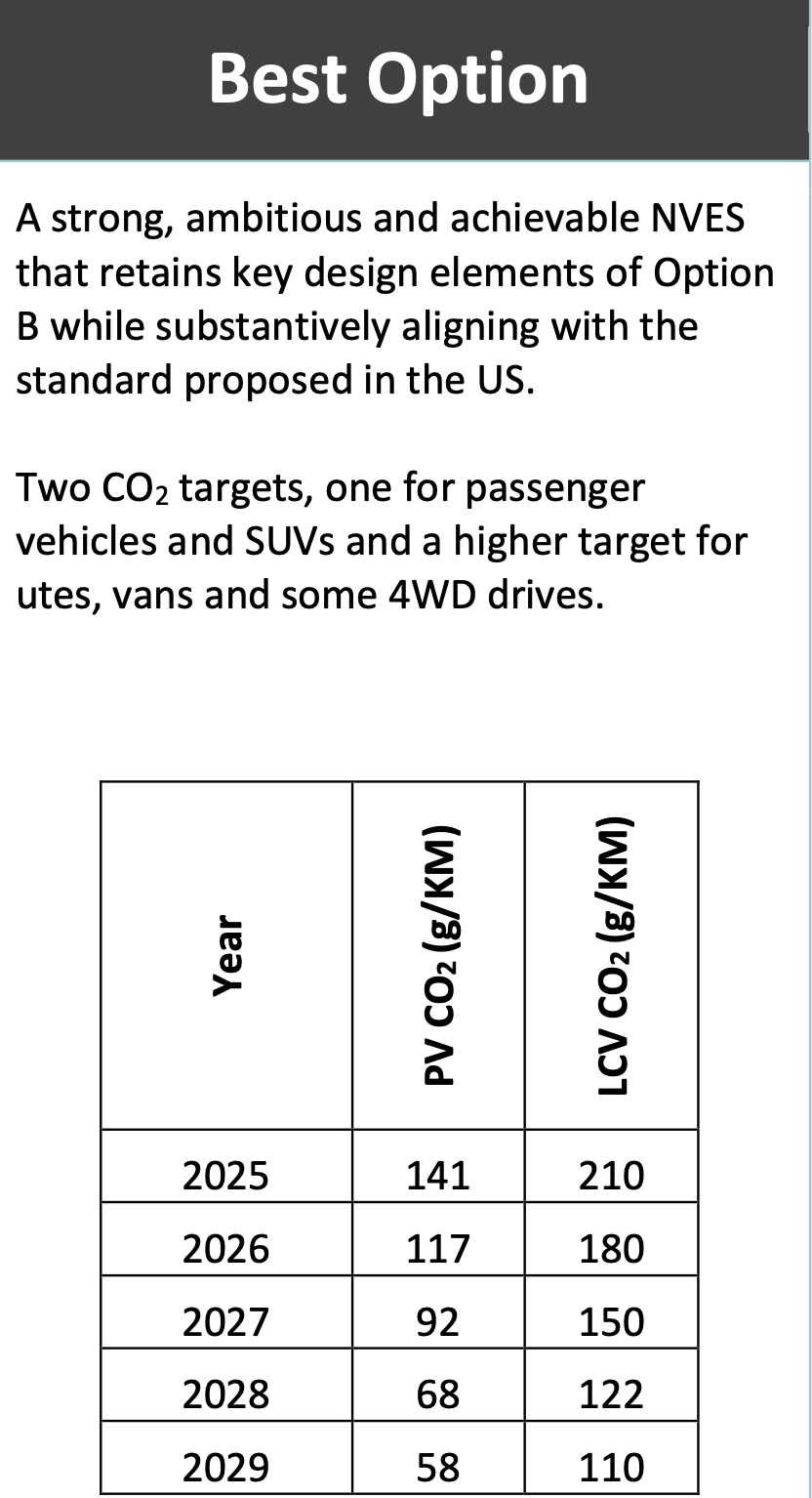
The standards are applied to each manufacturer and are adjusted for average vehicle mass up to a limit of 1500 kg for cars and 2400 kg for light commercial (LCV). The penalty is $100/g. It’s interesting as a football tragic to watch all the ads during the sports targeting I guess tradies for cheap utes. Australians are rightly taken for fools by much of Asia and particularly the Japanese. In the ultimate tradeoff in adopting the policy around 96,000 large 4WDs were reclassified into the LCV bucket. So we ain’t getting away from big double cabin utes just yet.
Considered from almost any social viewpoint this policy is fantastic for Australia. For instance the Goverment estimated the net present value of benefits less costs at $86 bn. Compare that with say Barnaby Joyces Inland Rail baby.
Politically though I doubt if it will win many votes at least not in the 2025 election. After all the standard doesn’t come into effect until next year and is designed to have a ratchet effect. It’s also, and naturally because that is what the LNP do, being tied by the echo chamber to the role of China in global trade. For my own part I think it may go down as Chris Bowen’s biggest and most long lasting achievement. Well done.
Capacity Investment Scheme and other stuff
The CIS, the $20 bn allocated to the CEFC for transmission(Rewiring the Nation fund) are policies that perhaps that are yet to show their value. Yet that is an unfair call because of course the CIS is really only moving into gear right now. Around 6 GW of CIS wind and solar, probably most with associated batteries, awards will be announced in December this year. If it is the case that those awards give a majority of industry stakeholders confidence that the projects will be on line in the time frame promised, that is basically prior to 2028 and to put it in political terms in the course of the next Govt, that will indeed be an achievement.
It’s an achievement that will compete with the success of the LRET scheme. That scheme a Howard Govt policy has been a success. A success despite the best attempts of the Abbott Govt to eliminate it. I was not and I’m still not a fan of extending the RET, but that doesn’t make me blind to its achievements.
Now we are in the world of the CIS and its uncertainty. It’s uncertainty because by design and intent it’s only meant to provide part of the answer. It’s meant to provide downside price protection, but only down to zero and not below. By design the policy is likely to result in winning tenders still needing to sign contracts that will provide the revenue gap between the floor price and the LCOE. Those contracts will have to be signed largely with big gentailers. Because there is not overarching national carbon policy the Gentailers don’t actually have any policy imperative to decarbonise. Instead that imperative is provided by relative generation costs and shareholder pressure. A carbon price would produce a lot more action but equally a lot more politics.
The CEFC has announced a $490 m commitment to the CWO-REZ for land acquisition and bio diversity offsets. What it has not done is to provide a guarantee to developers in the CWO-REZ for income protection if the transmission line is late. Equally neither has it provided a guarantee of income protection to the transmission developer if the renewable energy developers are late. In my opinion this is an obvious and necessary requirement for both developers and the transmission owner and a role the CEFC is ideally placed for. Still this note is a bigger picture look at policy.
Also $140 m out of a $700m total of early works VNI West funding has been provide to Transgrid by Rewiring the Nation
I also expect the Commonwealth’s share of Marinus Link stage 1 funding to be provided by funds from Rewiring the Nation.
Politically early works funding has zero impact. If 1% of Australians knew what VNI West was I’d be surprised.
82% and lower electricity prices
Forecasting lower prices is a mug’s game. There is no other way to say it. Wind and solar have lower LCOE than other forms of generation but there is a long, long journey from there to lower electricity prices for consumers. At the moment electricity futures indicate modestly lower wholesale prices going forward. I show QLD because of the State election.
And if we look at the guys that do price forecasting, and that includes my business ITK, you would find that we all basically see wholesale spot prices relatively flat out to 2035, with the main driver being the rate of new generation built compared to older coal generation exiting the system.
I don’t wish to go through supply and demand again in this note but if I include Golden Plains and McIntyre there is 6.7 GW of supply to come on line over the next 3 years much of which is now front end loaded and additionally there are at least 5 GW of utility batteries to come online also over the same period, plus another 6 GW or more of rooftop solar.
Equally though there are the closures of Eraring, Yallourn and I assume Gladstone to be completed in roughly the same time frame.
Also right now adding in more solar generation capacity essentially does nothing to increase total energy supply. Look at the figure below. Notice that utility solar has barely picked up this year even though there is more capacity on line than last year. Curtailment is killing utility solar and that’s not news to people who read these notes.
Green hydrogen
Perhaps green hydrogen will be a success, but right now it’s in my too hard basket. I would prefer more focus on process heat. Green hydrogen takes a lot of renewable energy. Yes there is some too spare in Spring during the day but I can’t see that green hydrogen yet lies on the critical path for decarbonisation in Australia. The critical path runs through transmission, social licence, new wind and solar capacity, decarbonisation of land transport and decarbonisation of process heat.
The only case I can personally see for investing in green hydrogen is to develop export industries to replace our coal and gas exports. And right now I don’t think that’s the highest marginal return on investment available for a $ of Govt funding.
Politically I don’t see much to show for the policy right now.
Manufacturing
The Govt announced in late March $1 bn would be allocated to ARENA for a solar sunshot program. A great background report Silicon to Solar study is a mandatory read if you are interested in the potential success of this program and the issues around it. I was fortunate to attend a briefing given by some of the authors and the point about exactly where in the value adding point to apply Govt leverage is a key.
Still in my view the real key is to get the right people involved. No matter how many robots, no matter a commodity or intellectual property, a quarry or a website, there is always a person or small team running the business that makes the difference between success and failure.
Proposed 2030 market design
In late August it was reported that the Productivity Commission might be tasked with advising on reform to the market design for the NEM post 2030. ITK believes that there are theoretical and practical issues for an energy only design when most of the energy is provided by zero marginal cost generators.
However we are skeptical, with all due respect, of having the work done by the Productivity Commission. Firstly the Productivity Commission doesn’t have credibility, background or authority in this area, especially as there are competing respected policy making or at least rule making bodies such as the AEMC. Secondly Goverments of a day mostly ignore Productivity Commission reports particularly if they require the spending of political capital.
Instead what is required is the equivalent of a Finkel report. A special 3 person enquiry with appropriate expertise and hopefully not too partisan, appropriately funded that can come up with the equivalent of what AEMO has achieved with the ISP but in terms of policy. Such an enquiry could take a range of submissions, commission the appropriate advise, do the international comparisons and move us forward. There is time and need to do a good job on this and the time to do it would be over the next 12-18 months to prepare the ground for policy that could be taken to a subsequent election.
Examples of special purpose enquiries that lead to results are to be found in Royal Commissions, the Finkel Report, the Carbon Pricing Scheme where the foundations were laid by the Gittins Report and so on. A green paper, a white paper and then policy. Everyone gets a say and the authority of the commission members leads credibility.
ITK’s Federal policy wish list
Overall the policy suite needs to be sold. That would be my no 1 wish. That the Govt could stand up for what is right, what the industry knows is the way forward after years of development and tell everyone else to get on the bus. After that..
Second. I’d like to see a proper carbon price, or the administratively simple carbon tax. However that is a wish too far, the political will doesn’t exist.
Third I’d like to see support for household batteries. There is some support at the State level but not at the Federal level.
Fourth I’d like to see policy aimed at using batteries to increase transmission capacity. In particular switchgear needs to be sized to allow for 100% use of both circuits in a double circuit line. Alex Wonhas explained this idea. Here’s a quote:
Take for example a single circuit 330 kV transmission line. Ignoring all other constraints, it might be able to transmit up to roughly 1,400 MW before it gets too hot. The precise figure depends on many factors including the quality of the conductor, the ambient weather conditions, how the line is built to name but a few.
However, the market operator would not be able to use this full ‘thermal’ capacity of the line because if this circuit failed, there is typically not enough reserve capacity in the system to make up for the resulting loss of 1,400 MW.
How are we managing this issue today? By building a second line with the same capacity, i.e. another 330 kV line to create a double circuit 330 kV line. If the first line failed, the second line could still transmit 1,400 MW. This so-called N-1 redundancy is fundamentally built into the whole transmission system.
Let’s imagine for a minute we have a 1,400 MW battery (i.e. roughly the capacity of the Waratah Super Battery currently under construction). With this battery in reserve and the ability to switch it on really fast (i.e. in less than 0.1 seconds, which is technically feasible) while simultaneously dropping off the generators upstream of the transmission fault, we could theoretically run the double circuit up to its full 2,800 MW capacity instead of limiting it to just 1,400 MW.
While the battery is discharging following a fault, it reduces the load on the remaining transmission system sufficiently to avoid overloading it and it gives AEMO enough time to re-secure the power system within 30 minutes.
In other words a battery with a really fast and reliable control scheme could up to double the capacity of a double circuit transmission line. Now that’s an opportunity worth pursuing.
Of course this is not really a Federal policy issue. However I was thinking some of the Rewiring the Nation fund could be allocated to increasing the capacity of transmission under construction.
Fifth I’d like to see lower electricity prices in REZs paid for arguably retailers or by an industry levy.

